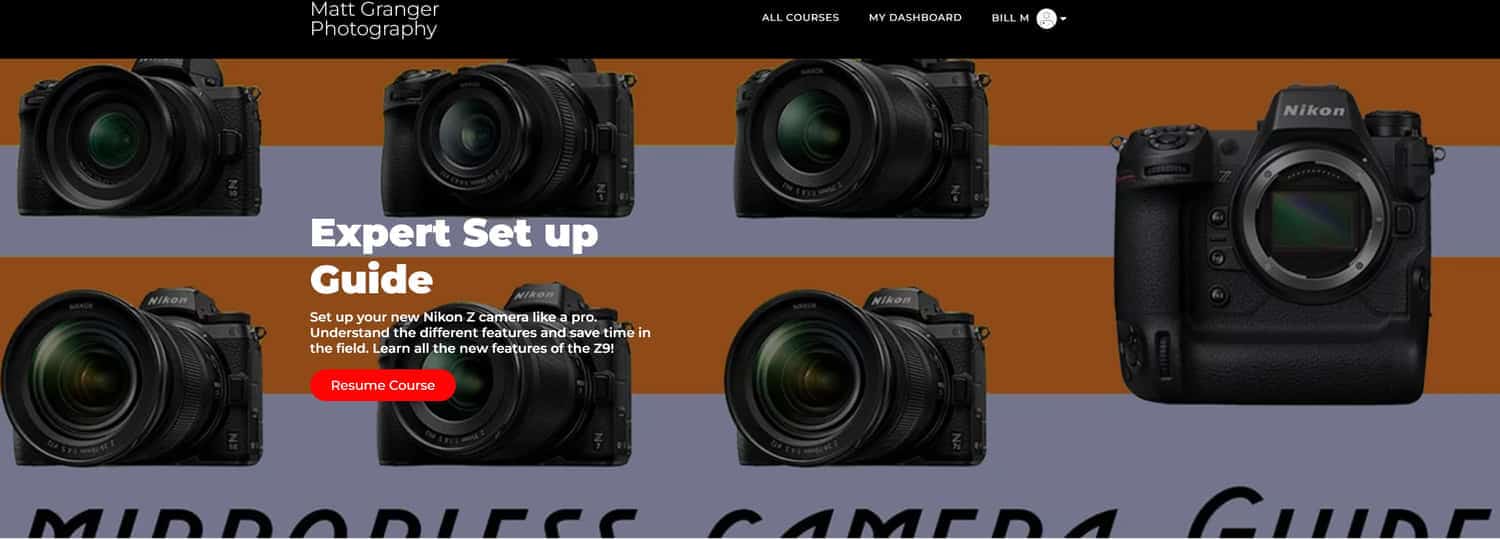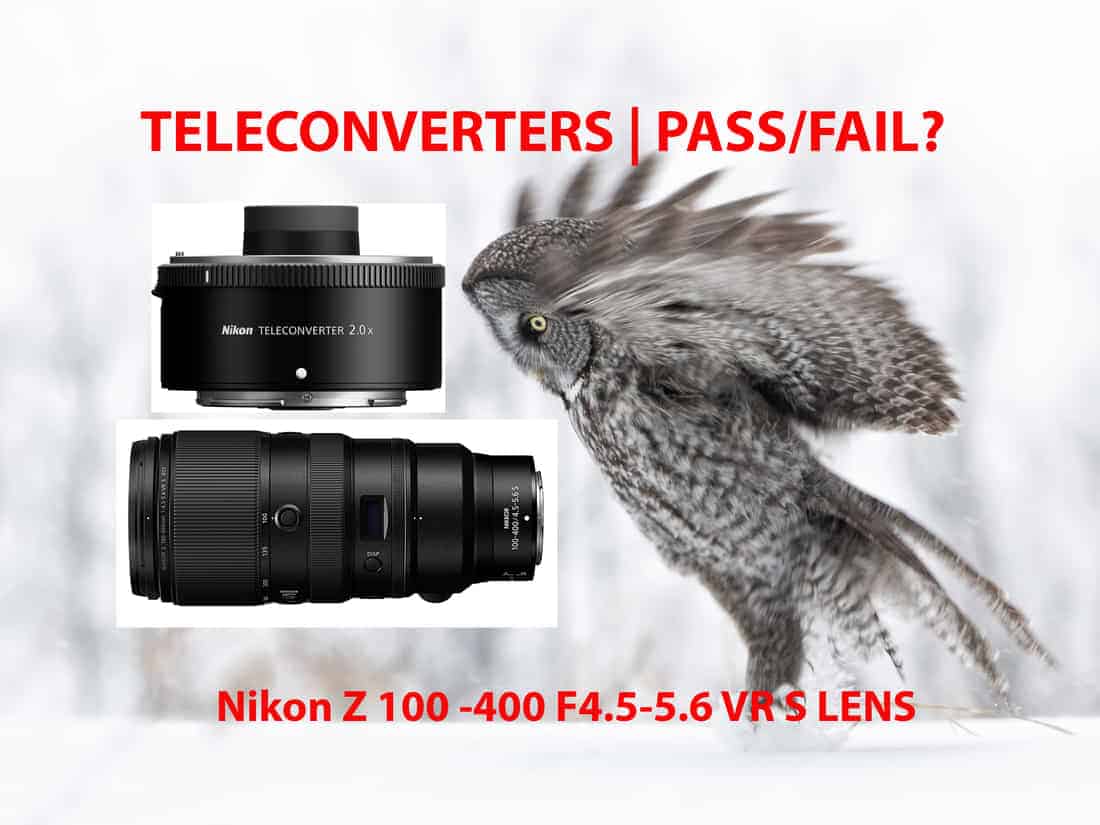
Nikon Z 100-400 | Teleconverter Field Test Z 1.4 & 2.0
Can the Nikon Z 100-400 lens be used with teleconverters? Yes, the lens can be used with both the Nikon Z TC-1.4X and the Nikon Z TC-2.0X and maintain autofocus. However, in the words of Dr. Ian Malcolm, just because you can does not mean you should.
For those of you considering a purchase like the Nikon Z 100-400 or any other gear from B&H, please consider using my B&H Affiliate Link. It helps to support my content creation efforts and there is no extra cost to you. Thank you for your support.
Nikon Z Camera Deep Dive with Matt Granger
If you landed here it means you’re likely shooting with a Nikon Z Camera. That being the case it is important that you get your Z Nikon camera set up properly for best results. I highly recommend Matt Granger’s Nikon Z Camera Expert Setup Guide.
After watching all of Matt’s Nikon Z camera video content, I can confidently say that it is a must-have resource for Nikon Z shooters. It includes setting up and customization for the Nikon Z9/Z6II/Z7II/Z6/Z7/Z5/Z50/Zfc.
If you follow along with Matt as he dives into each menu and walks you through all of the customizations and settings changes required, you can head out into the field knowing your Nikon Z camera is perfectly configured for whatever you’ll be shooting.
A Few Things To Keep In Mind:
As a wildlife photographer, what I am most concerned with is the quality of the image and whether it is tack sharp when using those teleconverters. In today’s post, I’m going to comment on how the Nikon Z 100-400 lens performs and share with you the images I took with it on my Nikon Z6II mirrorless camera. We will compare images taken natively and with both the 1.4X and 2X teleconverters. As soon as I receive my Nikon Z9 Mirrorless Camera I will be posting sample images from that camera body as well. I am very curious to see if image sharpness changes with the Z 100-400 lens with teleconverters based on the camera being used.
I expect most of you reading this post already know that the Nikon Z 100-400 is a 4.5-5.6. That’s important to note, because you are going to lose a stop of light with TC-1.4X making this lens an F8. You’ll lose a full two stops of light with the TC-2.0X making it effectively an F11.

What does this mean to you in your everyday shooting? For wildlife in action you generally desire to keep your shutter speed above 1/1000th to freeze the action. Depending on the speed of the subject you’ll often times need to be around 1/3200th.
To gain that kind of shutter speed you are either going to need to have the available light or a camera that is capable of producing quality images at very high ISO’s. Of course your lens also needs to be up to the task, so let’s jump right in and take a look at a few sample images from the Nikon Z 100-400mm lens.
Teleconverter Test Results
I started my testing with a boring old static street sign to keep the conditions the same across all three images. The next three images that follow are taken minutes apart with me standing in the exact same position for all three shots. The lighting conditions were consistent throughout. There may be a better way to make this comparison, but that’s how I performed my testing.
The first image is the Nikon Z 100-400 with no teleconverter attached. I had the lens fully extended to 400mm and wide open at F/5.6. Based on my pixel peeping at 200% everything in the image appears tack sharp (not scientifically measured with some expensive gizmo) I do prefer the bokeh of an F2.8 or F/4 but for the reach and weight savings that is a sacrifice I am willing to make.

This second image is taken with the Nikon Z TC-1.4X teleconverter attached. That pulls us out to an F/8 and everything in the image is again tack sharp. From what I can see at 200% I would say there is no perceptible difference between the native lens and the one using the Nikon Z TC-1.4X teleconverter.

This third image is with the Nikon Z TC-2.0X teleconverter attached. It was this image I was most interested in reviewing as I would love to have that 200-800mm reach that I can carry on a strap and walk around with all day. Yes it’s an F11 when fully zoomed out but as you can see from this image the bokeh is nicely out of focus. This will be the case when the background is further away from the subject as the trees in this image are.

To round out the street sign testing, I zoomed in on the image with the TC-2.0X teleconverter. Given the size of the entire canvas this “Westboro” blow up represents less than 10% of the available pixels from the Nikon Z6II. I’d never crop one of my wildlife images from this few pixels within an image but its nice to know that you could. I was very pleased with how sharp the “Westboro” image was considering the crop factor.
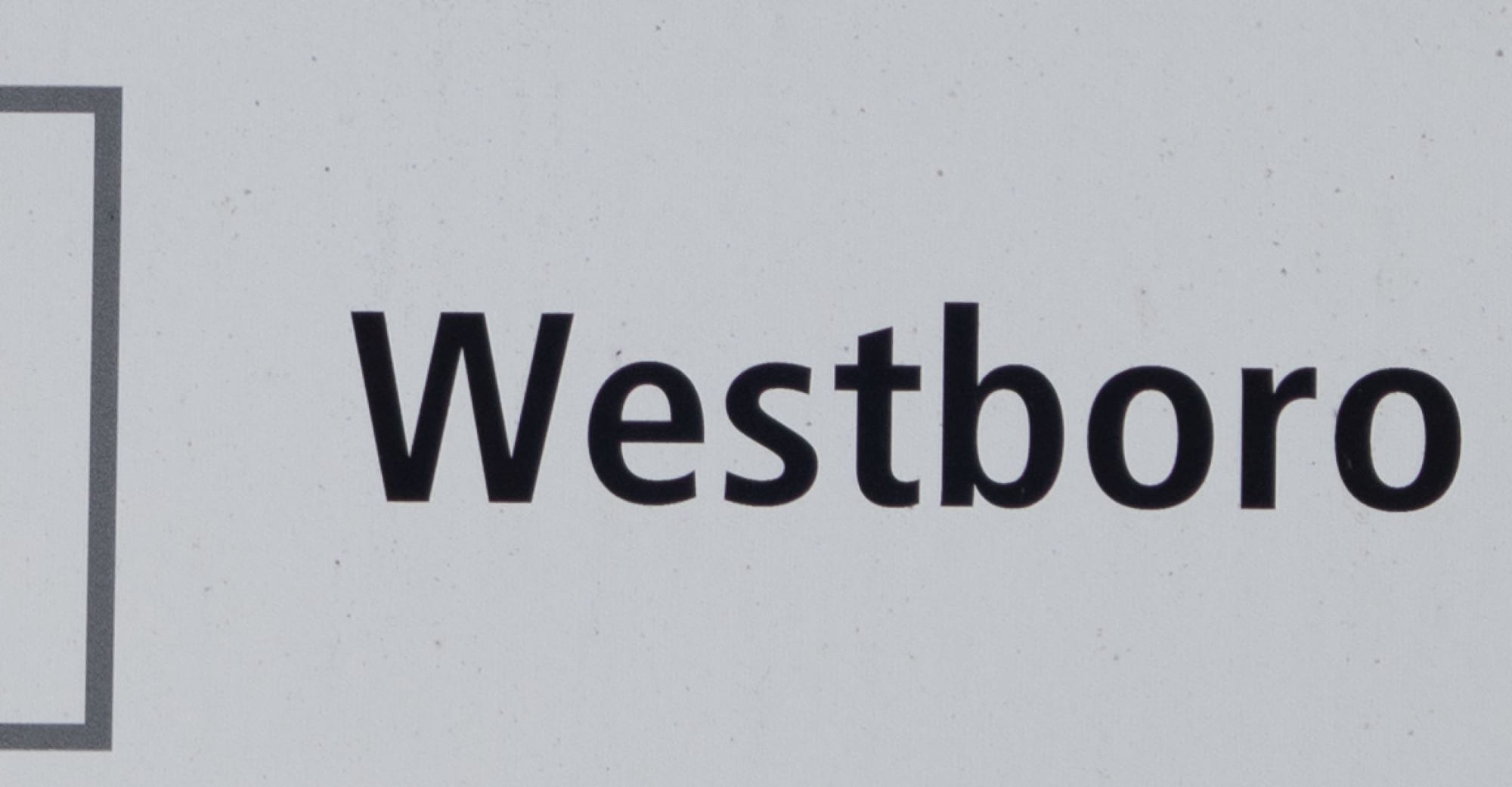
Real World Testing | Nikon Z 100-400 with Z TC-2.0X
Disclaimer: I’ve never been a big fan of 2X teleconverters, especially on a zoom lens that is at f/5.6, so I went into this test with a bias.
Shooting road signs is one thing but what I really wanted to know was how the Nikon Z6II with Nikon Z 100-400 and Z TC-2.0X teleconverter combo would perform in a real world wildlife shooting scenario?
Note, the following images were all hand held and will not win any awards.:)) After a few hours of shooting I can attest to the fact that you could walk around with this camera and lens combo all day without fatigue. To be fair, I did have it on a Double Black Rapid Strap so that I did not have to hold onto it when I was not shooting. To give you an idea on weight, the Nikon Z 100-400 comes in at 3 lbs 2.7 oz and the Nikon Z 70-200 is 3lbs 2.8 oz, so virtually the same.
This image of the Canada Goose was taken full frame with no cropping. I intentionally kept my shutter speed at 1/2000th to eliminate the notion that an image might be soft due to motion blur from a slow shutter speed.
Good Light Scenario

Pixel peeping up close on the eye shows just how tack sharp the Nikon Z 100-400 with Nikon Z TC-2.0X combo is. I would have no reservation about using the Nikon Z TC-2.0X teleconverter with the Z 100-400 lens in good light.

Low Light Scenario
Now that I’ve concluded that the Nikon Z 100-400 with Z TC-2.0X performs surprisingly well in good light, it was time to run a test in low light. The light was so low on this grey squirrel that I had to drop my shutter speed to 1/1000th and crank my ISO up to 10,000. Even then the rendered image is still very underexposed.
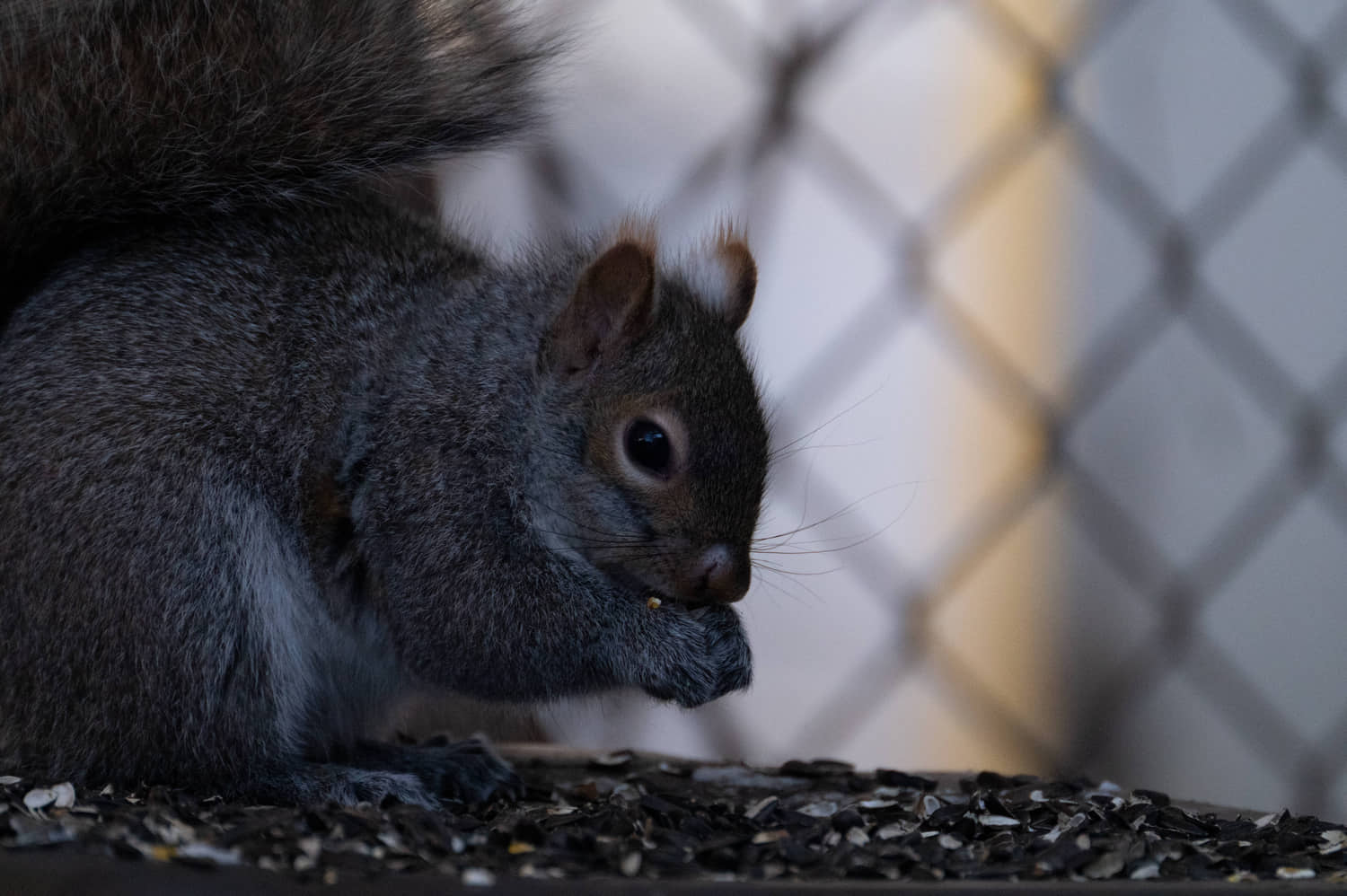
This image straight is unusable straight out the camera without first performing the usual edits for exposure, blacks, whites. shadows and noise reduction with Topaz Denoise AI and sharpening with Topaz Sharpen AI. I was curious to see what the edited image would look like. Would it be too soft?

I am seriously thinking of entering this grey squirrel image into a photography contest. I particularly like how the chain link fence fades to the left and blends into the subject. LOL
Ok seriously, what do you think from a sharpness perspective? I did not spend a lot of time on this image other than the few basic edits mentioned above. I try not to shoot at ISO 10,000 however for the purpose of this low light test it was a fun scenario to experiment with.
I must say I was shocked by this resulting image being as sharp on the eye as it is. Two caveats worthy of mention. Your hand held technique and your ability to curb motion blur will have a lot to do with the resulting images.
From all of the low light shots that I took of this grey squirrel I would say 70% were tack sharp on the eye. I have found that taking short bursts in low light, or any other shooting scenario for that matter, improves the odds of coming away with at least one tack sharp image.
Secondly, in low light, the Nikon Z6II & Nikon Z 100-400 with TC-2.0X combo at f/11 was hunting for focus at times which it did not do in good light.
I can not isolate that variable to the lens and TC-2.0 combo. I do find that the Nikon Z6II has a tendency to hunt in low light even without a teleconverter and with other lenses so it could be the camera. Once I have the Nikon Z9 in hand, I will run this low light test once again and report my findings.
I’ve been asked a lot about my image processing workflow, here’s a quick run down of my steps.
Bill’s Image Editing Workflow
- Step 1 – Use Adobe Camera RAW and Photoshop to correct tone, color, and composition
- Step 2 – Use Topaz DeNoise AI to remove distracting noise while retaining edge detail
- Step 3 – Use Topaz Sharpen AI to add sharpness and edge detail
- Step 4 – Use Topaz Gigapixel AI to upscale and increase resolution without losing quality
Go to any of the links above to start a free 30-day trial.
PRO TIP: Purchasing the Image Quality Bundle with all 3 products saves you $$$ and using coupon code coolwildlife15 saves you 15%. Click on the image below to go directly to the IQ bundle.
Arca Swiss Replacement Foot
Kirk LP-70 Replacement Lens Foot: Available at B&H: $90
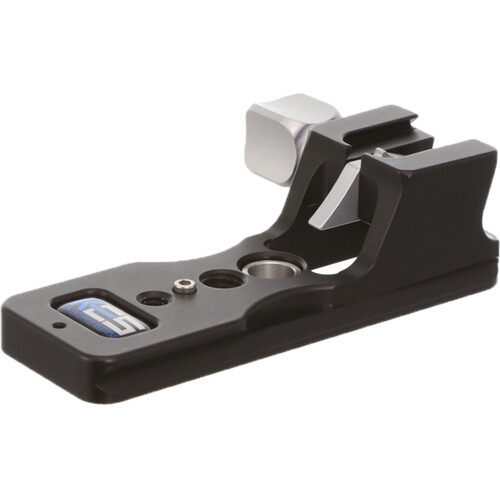
The Nikon Z100-400 lens is certainly light enough to carry around for entire day. I will however have times, especially in low light, where I will be using this lens on a tripod. To do that requires an Arca Swiss replacement foot. It just so happens that the Kirk LP-70 Replacement Lens Foot for Nikon Z 70-200mm f/2.8 VR S Lens fits the Nikon Z 100-400mm. I ordered mine prior to receiving the lens to avoid the disappointment of backorders which is happening all too frequently these days.
9 Reasons To Like The Nikon Z 100-400 Lens?
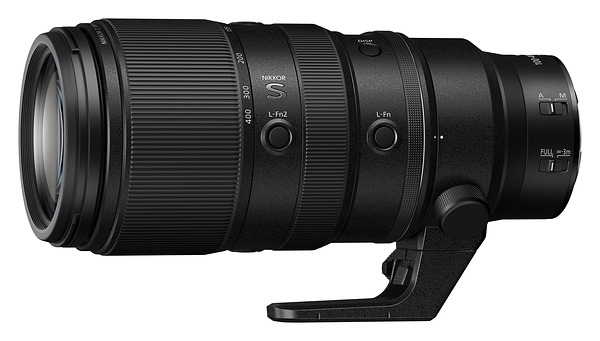
The Nikon Z 100-400mm has a lot going for it. Having used it for a few days I can think of nine things that I really like about this lens.
- Weight: The Nikon Z 100-400 comes in at 3.2 lbs. Compare that to the Nikon Z 70-200 at 2.99 lbs.
- Works Well With Teleconverters: Sharp results with both the Nikon Z TC-1.4X & TC-2.0X
- Minimum Focus Distance: A very short 2.5 feet. Compare that to my Nikon 200-400 VRII at 6.6 feet.
- Balanced: Nikon’s design brilliantly keeps the lens balanced throughout the focal range. Compared to the 200-500 which is very front end heavy.
- Vibration Reduction: Image stabilization of 5.5 stops, 6 stops when paired with the Nikon Z9.
- Zoom Throw: Short rotation of just 80°. Allows changing between the 100mm to the 400mm positions quickly.
- Programmable Control Ring: By default it adjusts manual focus, but can be programmed to control aperture or exposure compensation.
- Weather Proofing: Dust and moisture-resistant lens barrel, important quality for a zoom lens.
- Work Of Art: In addition to being well built, it’s a gorgeous lens to look at.
Links To Nikon Z Related Accessories
Nikon Z 100-400mm Lens: B&H: $2696.95
Nikon Z TC-1.4X Teleconverter: B&H: $546.95
Nikon Z TC-2.0X Teleconverter: B&H: $596.95
Kirk LP-70 Replacement Lens Foot For Z 70-200 and Z 100-400: B&H: $90
Nikon Z9 Mirrorless Camera: B&H: $5496.95
Nikon Z7II Mirrorless Camera: B&H: $2996.95
Nikon Z6II Mirrorless Camera: B&H: $1996.95
Nikon FTZ2 Adapter: B&H: $249.95
Conclusion
The Nikon Z 100-400mm lens impressed beyond what I expected with the use of teleconverters. There’s no way I would have ever considered slapping a 2X teleconverter on any of my F mount zoom lenses, the resulting images were just too soft. The Nikon Z 100-400 will replace the Nikon 200-400 VRII in my camera bag in 2021.
While I love the f/4 bokeh of the 200-400 VRII lens, the weight savings, sharpness with both teleconverters and native Z mount is worth the move. I will also carry both the Z TC-1.4X and TC-2.0X teleconverters for use with my Nikon Z 70-200 2.8 and the Nikon Z 100-400. Please note, at the time of this writing those are the only two Nikon Z lenses that the Z teleconverters work with.
If you’re interested in receiving more content like this, hit the subscribe button below and you’ll receive an email every time there is a new post.
Thank you so much for for supporting the channel.
